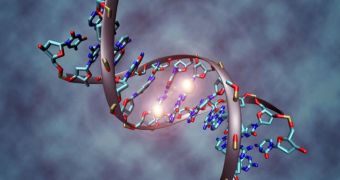It's a good thing Homer is long gone, otherwise he might have just considered suing a bunch of scientists who have pretty much ripped off his Trojan Horse idea, for copyright infringement.
Not to beat about the bush, a recent paper in the American Chemical Society's journal Applied Materials and & Interfaces documents the development of teeny tiny pyramids made of DNA.
Much like the Trojan Horse described in Homer's “Odyssey,” these miniature pyramids are not what they seem. On the contrary, they are a means to deliver drugs to bacterial cells, scientists explain.
Simply put, the DNA pyramids are designed in such ways that drugs can be stored inside them and then released when they finally reach their target and enter the bacterial cells that they are supposed to make mincemeat of.
As detailed in a press release on the website for the American Chemical Society, the researchers who created these DNA pyramids have until now used them to deliver a drug dubbed actinomycin D (AMD, for short) to two different bacteria.
The bacteria that these experiments were carried out on were Escherichia coli (E. coli) and Staphylococcus aureus (S. aureus). By the looks of it, the DNA pyramids proved fairly successful in terms of destroying them.
Thus, with the help of gold nanomaterials that served as fluorescent tags, scientists were able to observe the laboratory-made pyramids entering the bacterial cells, and releasing their drug cargo.
When compared to how many cells AMD can destroy when administered as such, it looks like the use of the DNA pyramids upped the drug's ability to locate and destroy E. coli and S. aureus cells to a considerable extent.
“In tests on the common bacteria Escherichia coli and Staphylococcus aureus, the scientists tracked the nanopyramids as they entered the cells and released the drug payload,” the press release on the American Chemical Society's website reads.
“This killed 65 percent of the S. aureus and 48 percent of the E. coli, compared to 42 percent and 14 percent with AMD alone,” the scientists behind this research project further detail the outcome of their experiments.
It is believed that, at some point in the not-so-distant future, such laboratory-made DNA pyramids could serve to boost the efficiency of various drugs by allowing them to locate, target and destroy bacterial cells they would otherwise have a fairly difficult time accessing.
“Some infectious pathogens can lie in wait, undetectable in the human body or in places that antibiotics have a hard time accessing. Engineered nanomedicine offers a new way to deliver drugs directly into bacterial cells,” specialists say.

 14 DAY TRIAL //
14 DAY TRIAL //